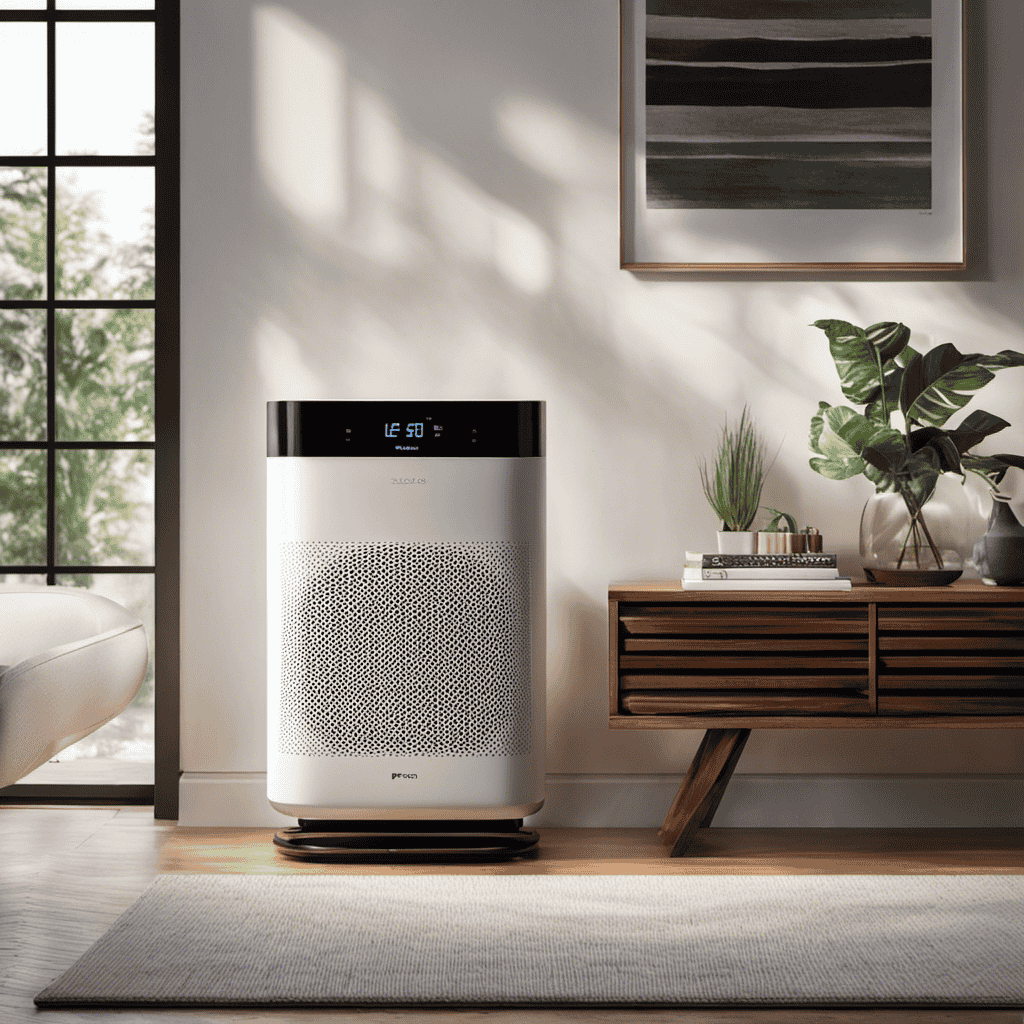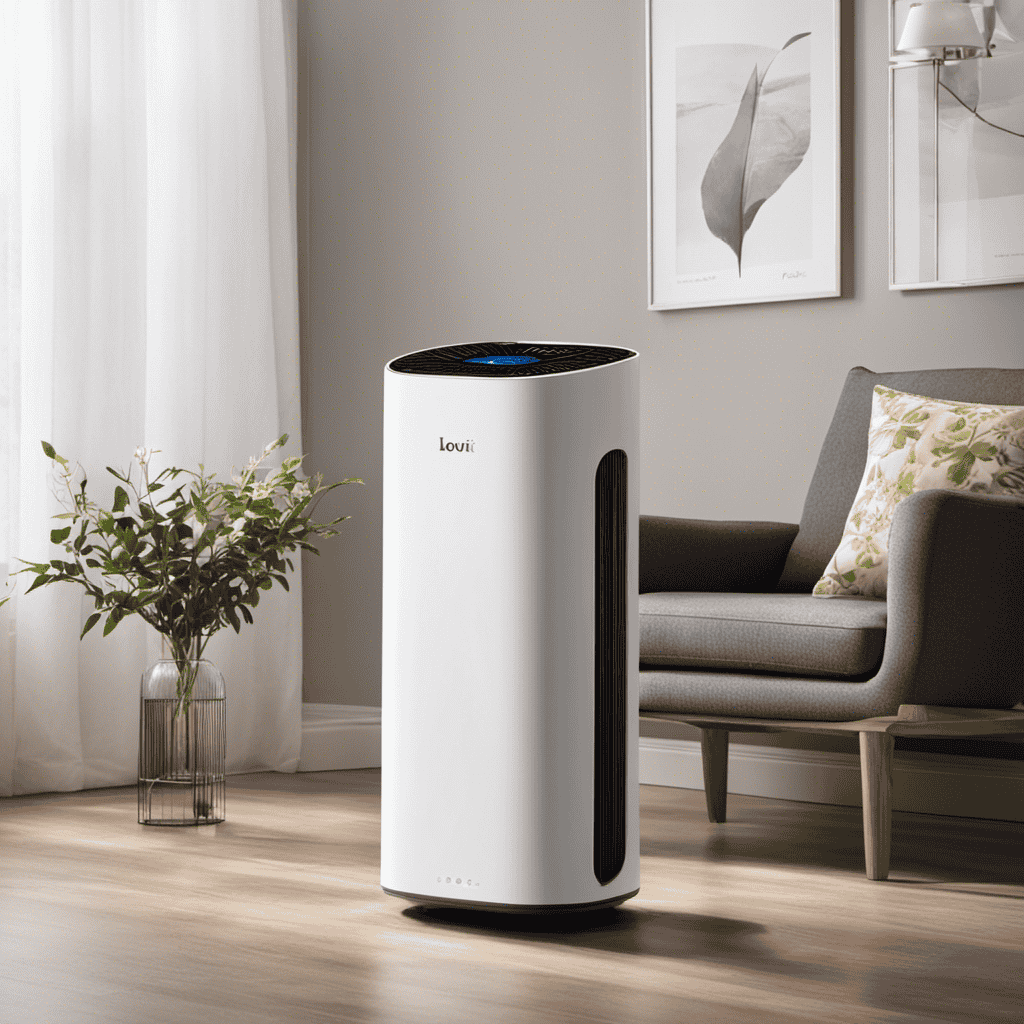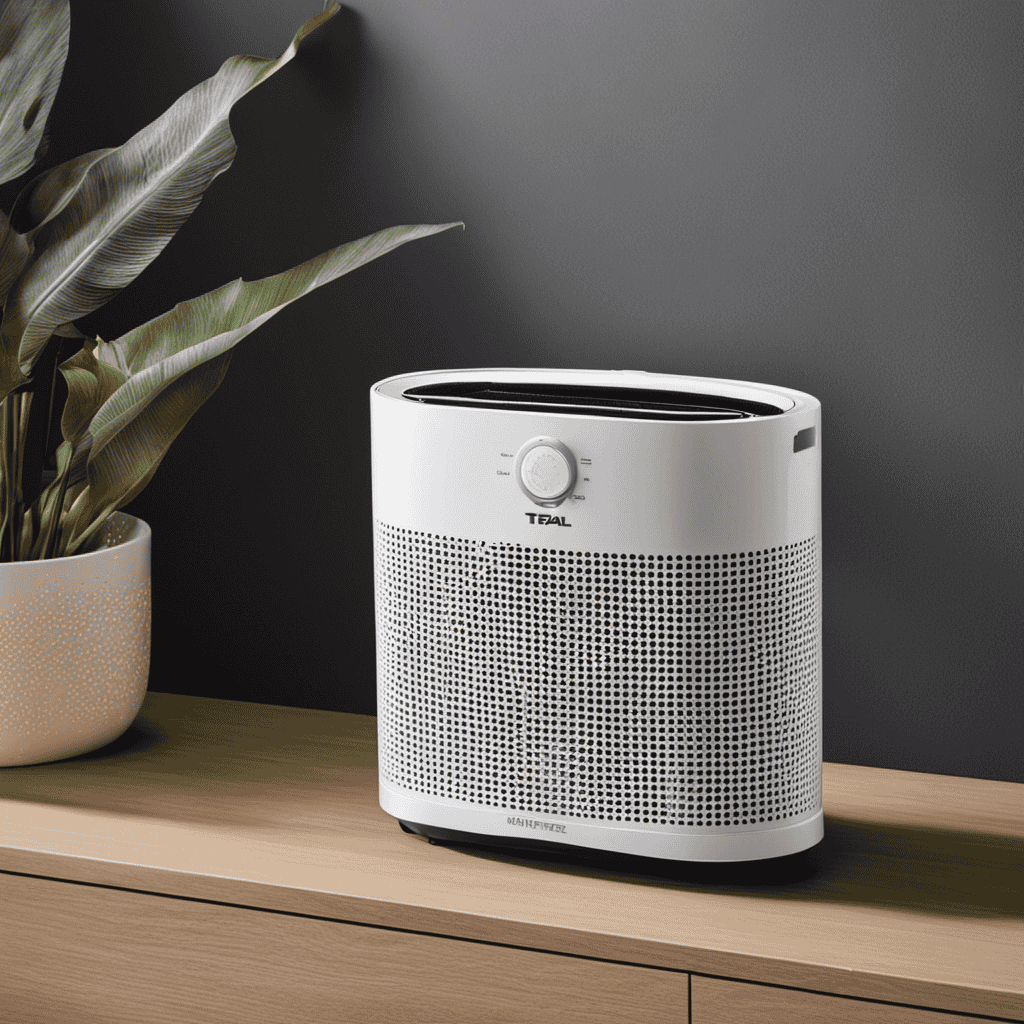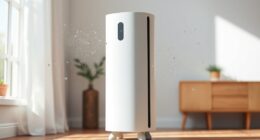I have frequently pondered how long my air purifier should operate to guarantee the cleanest air possible. It’s a common query that many people might have, given the significance of maintaining good indoor air quality.
In this article, we’ll delve into the factors that determine the optimal runtime for your air purifier. By understanding the recommended operating time for different models and finding the right balance between runtime and energy efficiency, we can ensure our air purifiers are working effectively without overworking them.
Let’s explore this topic together.
Key Takeaways
- Factors such as room size, air quality, pollution levels, and allergies should be considered when determining the optimal runtime for an air purifier.
- The size of the room, level of indoor air pollution, noise level, energy consumption, and air quality should be taken into account when deciding the runtime of an air purifier.
- It is important to understand the recommended operating time for different air purifier models and refer to the manufacturer’s guidelines for specific recommendations.
- Regular maintenance, including filter replacement and cleaning, is crucial for extending the lifespan of an air purifier and maintaining optimal performance.
Determining the Optimal Runtime for Your Air Purifier
To figure out how long your air purifier should run, you need to consider factors such as room size and air quality. Determining the optimal settings for your air purifier is crucial in ensuring clean and healthy air in your home.
The size of the room plays a significant role in determining the runtime. For smaller rooms, a shorter runtime may be sufficient, while larger rooms may require a longer runtime to effectively clean the air.
Additionally, the air quality in your home should also be taken into account. If you live in an area with high pollution levels or suffer from allergies, you may need to run the air purifier for longer periods.
Regular maintenance is also vital to ensure the optimal functioning of your air purifier and to maximize its lifespan. By replacing filters and cleaning the unit regularly, you can ensure that it continues to perform at its best.
Factors to Consider When Deciding How Long Your Air Purifier Should Run
When deciding how much to run your air purifier, you’ll want to consider several factors.
The ideal air purifier runtime depends on various factors that can affect the air quality in your home.
First, you need to consider the size of your room and the capacity of your air purifier. A larger room may require a longer runtime to effectively purify the air.
Additionally, you should take into account the level of indoor air pollution in your home. If you have pets, smoke, or allergies, you may need to run your air purifier for longer periods to maintain clean air.
It’s also important to consider the noise level of the air purifier, especially if you plan to use it while you sleep.
Finally, energy consumption and cost should be taken into consideration.
Understanding the Recommended Operating Time for Different Air Purifier Models
Understanding the recommended operating time for different air purifier models can help me effectively improve the air quality in my home. Determining air purifier efficiency is crucial in ensuring that the device is running optimally and providing clean air.
The impact of air purifier runtime on air quality is significant, as a longer runtime allows for more air to be filtered and pollutants to be removed. However, it is important to note that running the air purifier continuously may not always be necessary or cost-effective. Some models are designed to run for specific periods, such as a few hours a day or continuously for a certain number of days.
It is important to refer to the manufacturer’s guidelines to determine the recommended operating time for my specific air purifier model. By following these recommendations, I can ensure that my air purifier is working efficiently to improve the air quality in my home.
Tips for Extending the Lifespan of Your Air Purifier Without Overworking It
By following these simple tips, you can extend the lifespan of your air purifier without overworking it. Maximizing performance and implementing proper maintenance are key to keeping your air purifier running efficiently for a long time.
First and foremost, it’s crucial to regularly clean or replace the filters in your air purifier. Clogged filters can hinder airflow and reduce the effectiveness of the purifier.
Additionally, make sure to clean the exterior of the unit to remove any dust or debris that may accumulate.
Another important tip is to keep your air purifier in a well-ventilated area to prevent overheating.
Lastly, it’s advisable to follow the manufacturer’s instructions for usage and maintenance.
By following these maintenance tips, you can ensure that your air purifier remains in optimal condition, maximizing its performance and prolonging its lifespan.
With these tips in mind, let’s explore how to strike a healthy balance between air purifier runtime and energy efficiency.
Finding the Balance: How to Strike a Healthy Balance Between Air Purifier Runtime and Energy Efficiency
To strike a healthy balance between how long I use my air purifier and how much energy it consumes, I consider adjusting the fan speed and timer settings. By finding the right balance, I can maximize air purification while minimizing energy consumption.
Here are some tips to achieve this:
-
Adjust the fan speed: Running the air purifier on low or medium settings can still effectively clean the air while using less energy compared to high speeds.
-
Utilize the timer function: Set the timer to run the air purifier only when needed, such as during peak pollution hours or when I’m not at home.
-
Optimize placement: Placing the air purifier in a central location can help circulate clean air throughout the room without running it for extended periods.
-
Maintain regular filter replacements: Clean filters can ensure efficient air purification, allowing the air purifier to work effectively without the need for prolonged runtime.
-
Consider the room size: Using an appropriately sized air purifier for the room can help maintain air quality without overworking the unit.
Frequently Asked Questions
Can I Leave My Air Purifier on All Day and Night?
Yes, you can leave your air purifier on all day and night. Continuous use provides several benefits, such as removing allergens and improving indoor air quality. When choosing an air purifier, consider factors like the CADR rating and filter lifespan for optimal performance.
Is It Safe to Run an Air Purifier Continuously in a Baby’s Room?
It is safe to run an air purifier continuously in a baby’s room. Experts recommend using a HEPA filter, keeping the room well-ventilated, and following the manufacturer’s instructions for optimal air purifier safety.
Should I Turn off My Air Purifier When I Leave the House?
It is necessary to turn off the air purifier when leaving the house. Leaving it on when no one is home can be a waste of energy and may not provide any additional benefits.
Can I Adjust the Runtime of My Air Purifier Based on the Air Quality in My Area?
I can adjust the runtime of my air purifier based on the air quality in my area. By monitoring the air quality, I can determine when the purifier needs to run longer to maintain clean air.
What Are the Potential Risks of Running an Air Purifier for Too Long?
Running an air purifier for an extended period can potentially have adverse health effects due to increased ozone levels and dry air. Additionally, it may lead to higher energy consumption, resulting in increased electricity costs.
Conclusion
In conclusion, determining the optimal runtime for your air purifier is crucial for maintaining clean and healthy indoor air. By considering factors such as room size, air quality, and the recommended operating time for your specific model, you can strike a balance between effectively purifying the air and conserving energy.
Extending the lifespan of your air purifier can also be achieved by regularly cleaning and maintaining it. So, ask yourself: How can I ensure the best air quality without overworking my air purifier?










